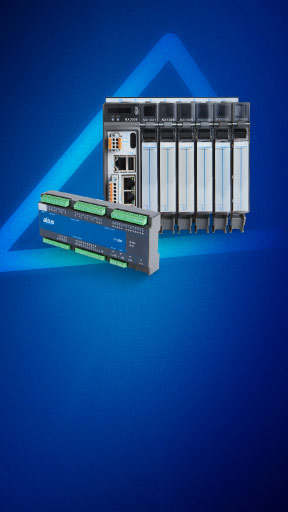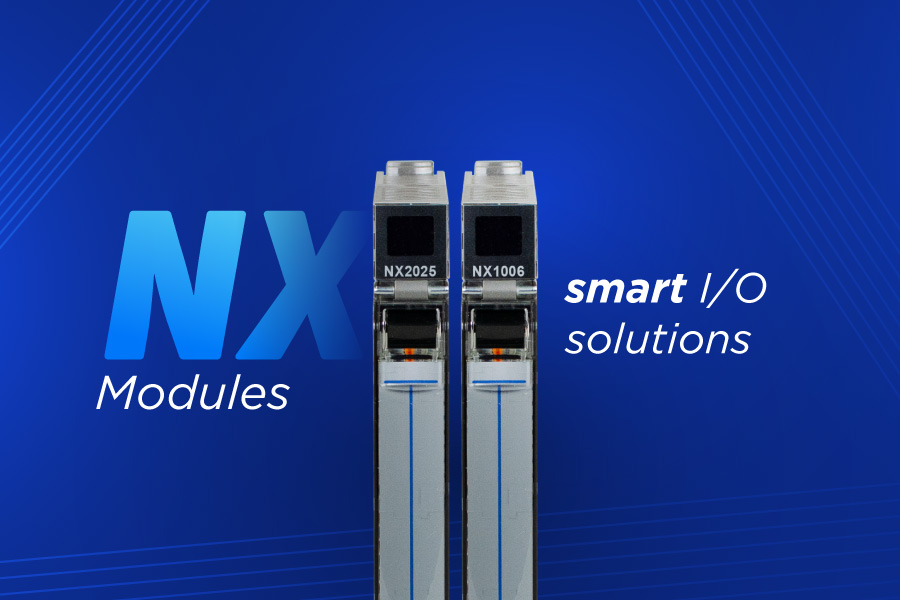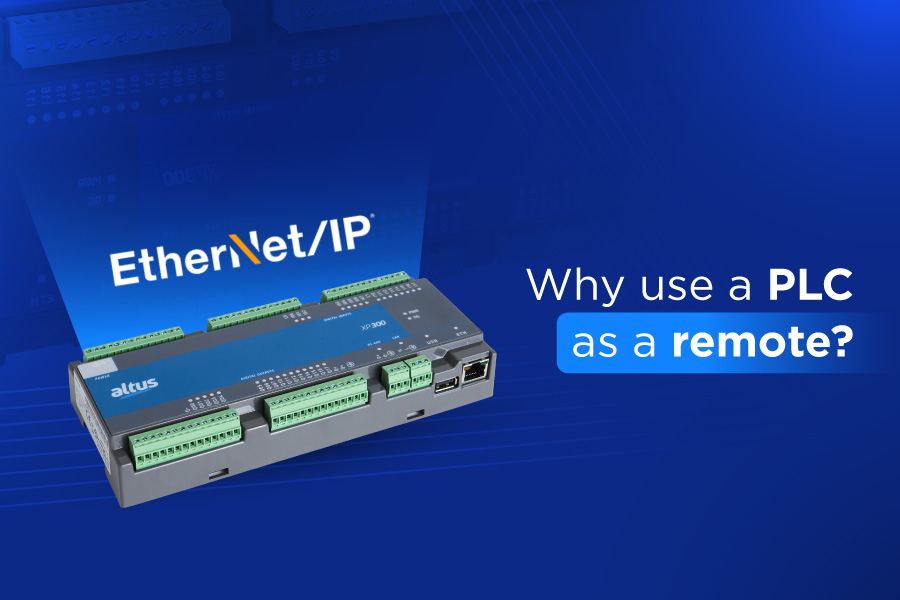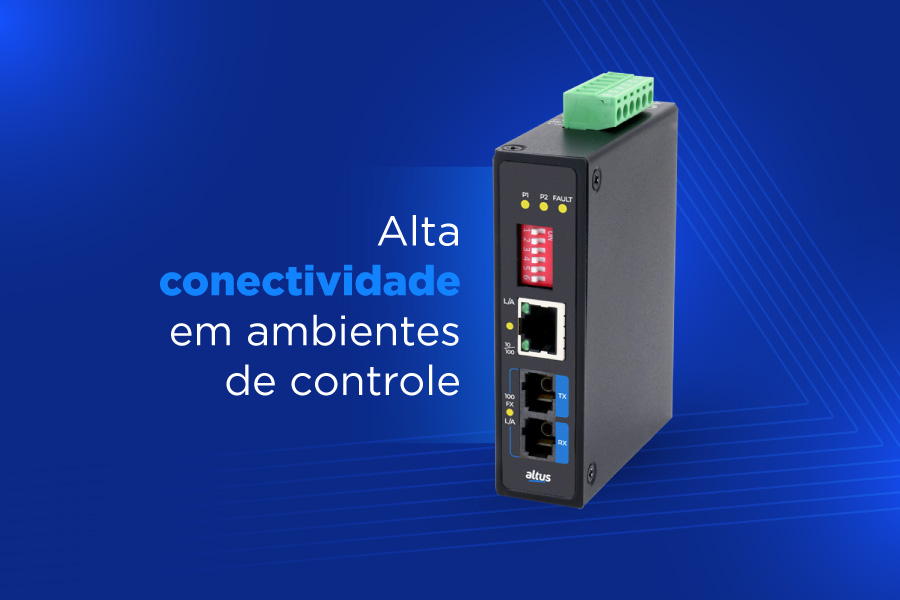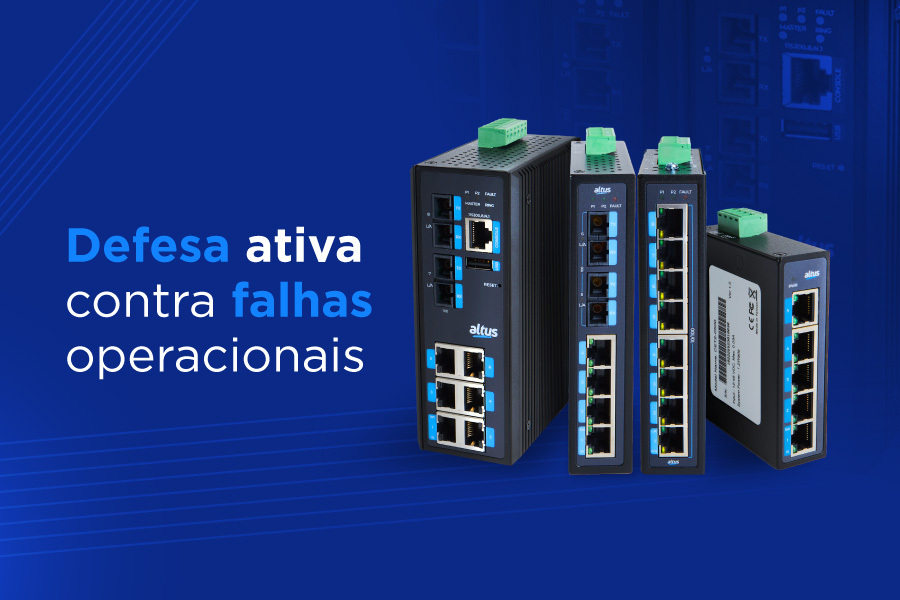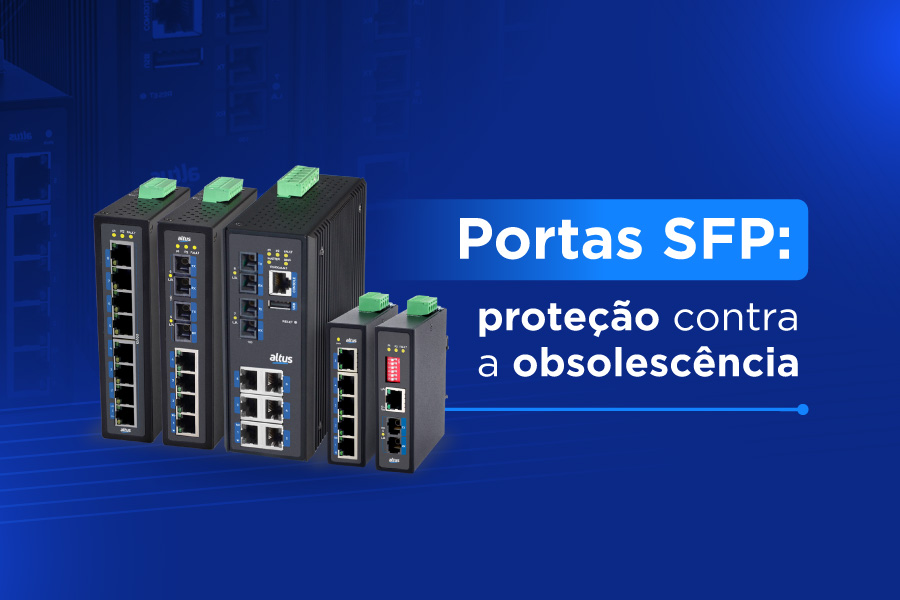The contemporary industrial scenario is driven by a relentless pursuit of efficiency, reliability, and maximum availability.
The transition to Industry 4.0 was not just a simple digitalization of processes; it represented a change in how automation systems are designed from the ground up. The focus shifted from command execution to the generation and analysis of real-time information. The traditional model of corrective maintenance, where intervention occurs only after a failure, is no longer acceptable in critical operations, where inactivity represents losses and, in some cases, safety risks.
It is in this scenario of increasing demand that the Nexto NX series distinguishes itself. Its architecture was designed not just to control, but also to function as an integrated ecosystem that actively monitors, diagnoses, and protects the production process. Each system component acts as an intelligent element, capable of reporting its own health and the integrity of its connection to the physical world.
This article will delve into the NX1006 and NX2025 modules and the main Nexto NX CPUs with the objective of analyzing how the combination of these technologies offers a complete control system with intelligence for automated operations.
Embedded intelligence in I/O modules
One of the most relevant innovations of the Nexto NX series is in the high modular capacity of its CPUs. The NX1006 and NX2025 I/O modules illustrate this concept well, by integrating intelligence into compact components capable of providing real-time diagnostics.
NX1006: digital input module
The NX1006 module is a unit of 8 monitored sink-type digital inputs, featuring a single-width design that optimizes space in electrical panels. Its main characteristics include galvanic isolation between the inputs and the internal logic, surge protection, and a resettable fuse for the sensors' power supply. These protections ensure the hardware's integrity, but the main differentiator of the NX1006 is its broken line detection capability.
The module continuously monitors the physical integrity of the connection between the field sensor and the module itself. In critical system applications, this capability is invaluable. With the NX1006, a line break is diagnosed in real time, allowing the maintenance team to repair the connection before the system's security is compromised, which shifts maintenance from a reactive to a predictive model in these scenarios.
NX2025: digital output module
The NX2025 module focuses on supervising the output circuit. This module of 8 monitored source-type digital transistor outputs also occupies a single slot on the rack, optimizing point density. In addition to differential mode activation and galvanic isolation, the NX2025 stands out for its vast range of diagnostics.
However, this module is not limited to sending a switching command; it acts as an electrical sensor that continuously monitors the health of the actuator and its wiring.
It is capable of detecting and reporting conditions such as no load, broken wiring, short circuit, or overcurrent. The detection of a persistent overcurrent, for example, can signal a mechanical actuator that is having difficulty moving and is about to fail, while the detection of a broken line prevents failed activation attempts. The ability to identify these anomalies allows operators and the maintenance team to plan for the replacement or repair of a component before its complete failure, avoiding unscheduled shutdowns and the need for emergency maintenance.
The Nexto NX series as an integrated platform
The intelligence contained in the NX1006 and NX2025 modules reaches its maximum potential when integrated into the flexible and powerful architecture of the Nexto NX series. The NX3008 and NX3030 CPUs, along with the communication modules, act as a platform that processes, communicates, and protects all diagnostic information.
Flexibility and scalability of the architecture
The NX1006 and NX2025 modules are designed to adapt to a variety of automation architectures, from centralized systems to distributed plants. They can be installed directly on the local bus of any CPU model.
For applications that require expansion to distant areas, the Nexto NX solution allows these modules to be used in remote PROFIBUS systems, using field network heads such as the NX5110 and NX5210 models.This scalability ensures that the same advanced diagnostic standards can be consistently applied throughout the entire plant, regardless of the distance of the I/O points. The technological standardization simplifies design, maintenance, and inventory management.
NX5210: a link in high availability
The NX5210 field network head stands out as a component for systems that demand high availability in distributed environments. While the NX5110 model offers a standard solution for simple PROFIBUS networks, the NX5210 was developed with advanced redundancy and hot-swapping features.
The redundancy capability of the NX5210 head, network redundancy, enables it to connect to two distinct PROFIBUS-DP networks, operating one as active and the other as backup. In case of a failure in the main network, communication is automatically transferred to the backup network, keeping the system in operation without interruption. This functionality, when combined with the native hot-standby redundancy support of the NX3030 CPU, creates an end-to-end architecture for high availability with master and network redundancy. In this configuration, the diagnostic intelligence of the NX1006 and NX2025 modules, the remote's connectivity, and the CPU's processing are all protected, as the system not only controls and monitors, but also guarantees the continuity of operation even in the face of component failures.
Watch our complete playlist about redundancy on the NX3030 CPU
See the application scenarios and architectures supported by the Nexto NX CPUs
| CPU | Feature | Application type | Supported architecture |
| NX3008 | Linux/Docker platform for edge computing | Industrial machines, IoT, local predictive analysis | Local bus, PROFIBUS remotes (simple with NX5110) |
| NX3030 | Native support for hot-standby redundancy | Critical processes, oil platforms, energy generation | Local bus, PROFIBUS remotes (simple with NX5110 or redundant with NX5210) |
Check out our content about NX3008's features
The end of "problem hunting": OTD and ETD in action
The One Touch Diag (OTD) and Electronic Tag on Display (ETD) functionalities of the Nexto NX series combine diagnostic intelligence with a simplified user experience. Imagine this scenario: a technician is called to check a fault in an access control system. Instead of needing a laptop to connect to the CPU, he locates the NX1006 module responsible for the input and presses the diagnostic button. Immediately, the display shows the input's tag, for example, "Sensor_Main_Door," and the broken line diagnosis. In seconds, the cause of the problem is identified without the need for other tools or printed manuals.
This ability to access information directly on the factory floor reduces the mean time to repair and, consequently, machine downtime. The OTD/ETD technology facilitates access to the diagnosis, allowing a maintenance team with different skill levels to solve problems quickly and accurately.
Reliability and reduced maintenance costs
The hot-swapping capability of the NX1006 and NX2025 modules is an essential factor for the system's high availability. This functionality enables a faulty component to be replaced on the rack without the system being de-energized or the production process being completely interrupted.
Furthermore, the Nexto NX series offers tools for a truly predictive maintenance approach. The CPUs, such as the NX3008 with its 64-bit ARM processor and embedded Linux platform with Docker support, can be customized to process the modules' diagnostic data in real time. Data analysis or machine learning algorithms can be executed in Docker containers to identify failure patterns and predict component lifespan, aligning the solution with the most advanced trends of Industry 4.0, allowing for the planning of interventions, optimization of spare parts inventory, and maximization of asset lifespan.
In addition, as a complement, the Nexto NX series' functions address security concerns with integrated security features. For this reason, the CPUs feature a firewall and the possibility of embedded VPN services. These features ensure that the high connectivity required for advanced diagnostics and remote maintenance does not create vulnerabilities in the industrial network.
See how to install a container on the NX3008
As you could see throughout this article, the Nexto NX series is not limited to keeping up with industrial automation innovations, it drives them. By combining ruggedness, flexibility, and high levels of security, the architectures that the series provides allow companies to develop increasingly smart systems that transform automation into a strategic asset for business continuity and growth.
Talk to our specialists through the form below to discover how Nexto NX is more than a control solution, it is the link between the present and the future of the industry.
